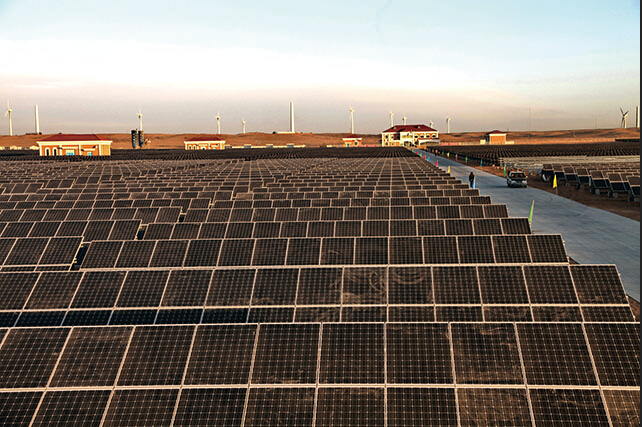It had roughly 280 MW of solar capacity in varying stages of development by the end of December 2016, from just 125 MW at the end of the preceding year.
Datang’s expanding PV pipeline underscores its ongoing efforts to diversify beyond its core wind-power business into other forms of renewable power generation.
It partly attributed its strong performance in 2016 to its growing focus on development in parts of China that are not subject to renewables curtailment.
However, average utilization hours from its PV projects fell slightly to 1,476 hours in 2016, from 1,544 hours a year earlier.
“The acceleration in respect of putting new projects into production significantly improved the company’s profitability,” it said in a statement to the Hong Kong stock exchange.
Revenue for the year to the end of December 2016 rose 3.54% year on year to 5.78 billion yuan.
The Beijing-based company’s cumulative installed capacity hit 8.5 GW, up 18.8% on the year, with wind projects accounting for roughly 98% of the total.
Its cumulative installed solar capacity jumped to 147.47 MW at the end of December, up 25.5% on the year.
Remote Qinghai province remained its main market for solar in China, with 60 MW of installed PV capacity.
In 2016, it added 10 MW of new solar capacity in Qinghai and 20 MW in Shanxi province.
Its solar projects generated 191 GWh of electricity in 2016, up slightly from 181 GWh a year earlier.
Datang’s total electricity generation, including power generated by its wind farms, reached 12,297 GWh, up 14.27% year on year.
The company, which expects “explosive growth” in the Chinese solar market through 2020, said it will broaden the geographic range of its installed PV projects throughout the course of this year.
China Datang Corporation Renewable Power — a unit of state-owned power group China Datang — has staged a stunning turnaround over the past two years.
It swung back to profitability in 2015, following a steep loss of 150.1 million yuan in 2014.
This content is protected by copyright and may not be reused. If you want to cooperate with us and would like to reuse some of our content, please contact: editors@pv-magazine.com.



By submitting this form you agree to pv magazine using your data for the purposes of publishing your comment.
Your personal data will only be disclosed or otherwise transmitted to third parties for the purposes of spam filtering or if this is necessary for technical maintenance of the website. Any other transfer to third parties will not take place unless this is justified on the basis of applicable data protection regulations or if pv magazine is legally obliged to do so.
You may revoke this consent at any time with effect for the future, in which case your personal data will be deleted immediately. Otherwise, your data will be deleted if pv magazine has processed your request or the purpose of data storage is fulfilled.
Further information on data privacy can be found in our Data Protection Policy.